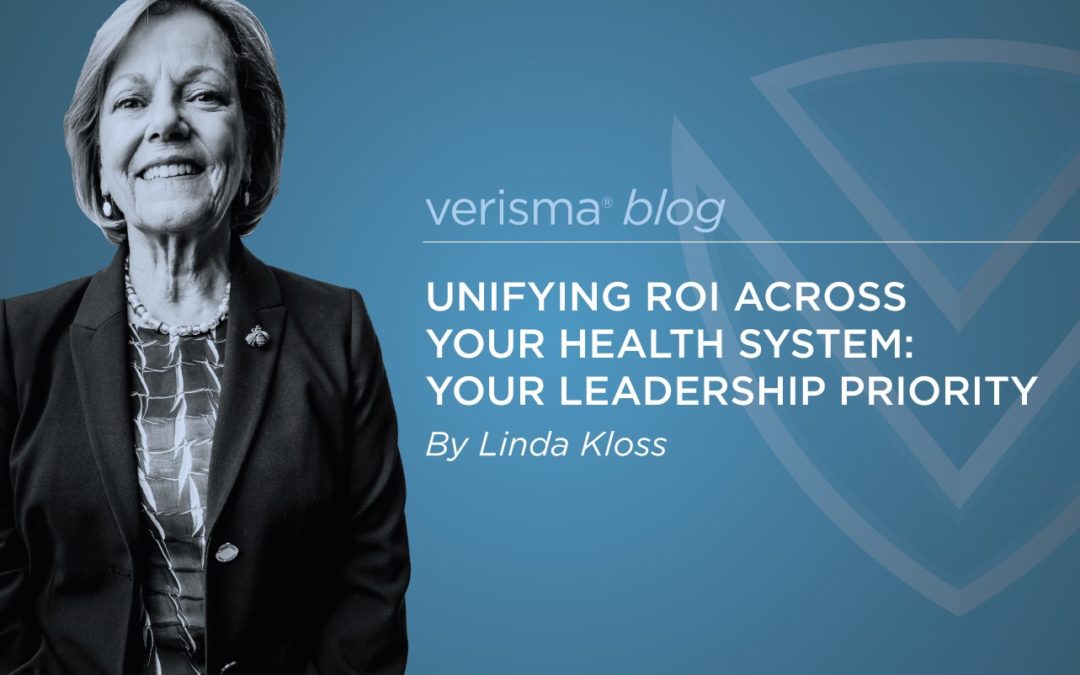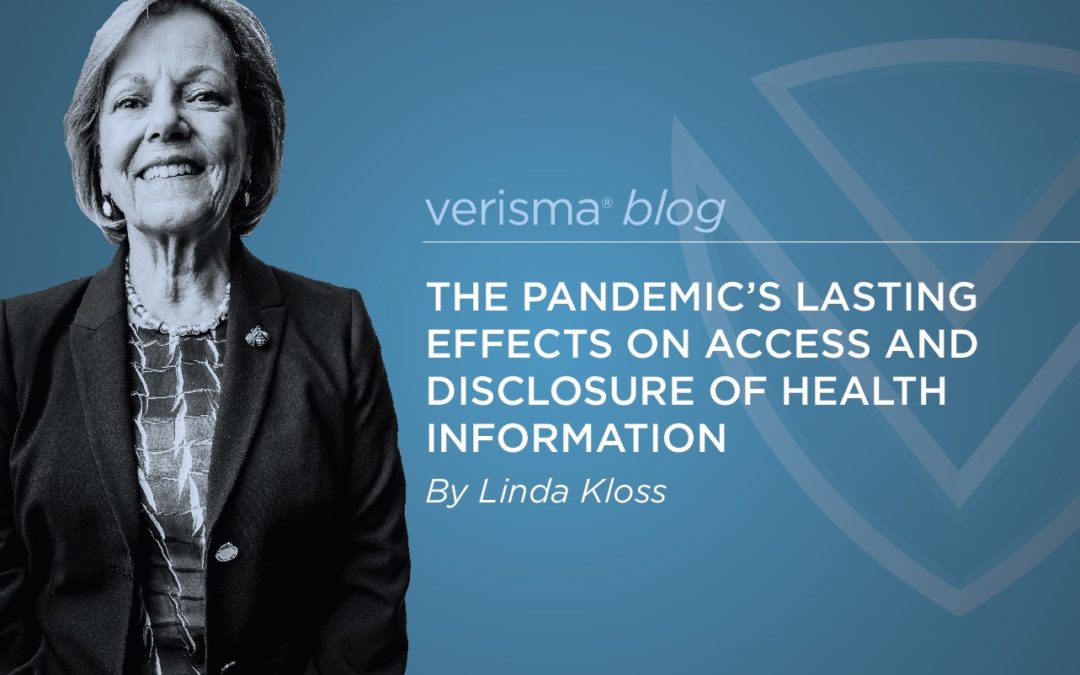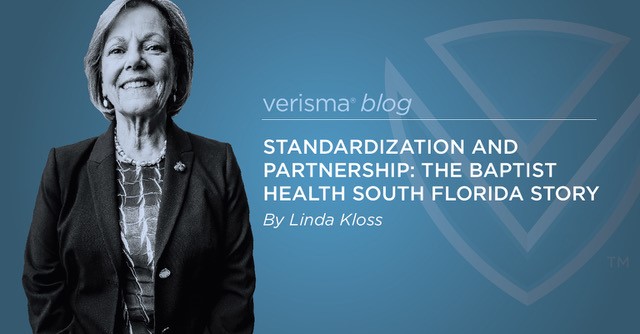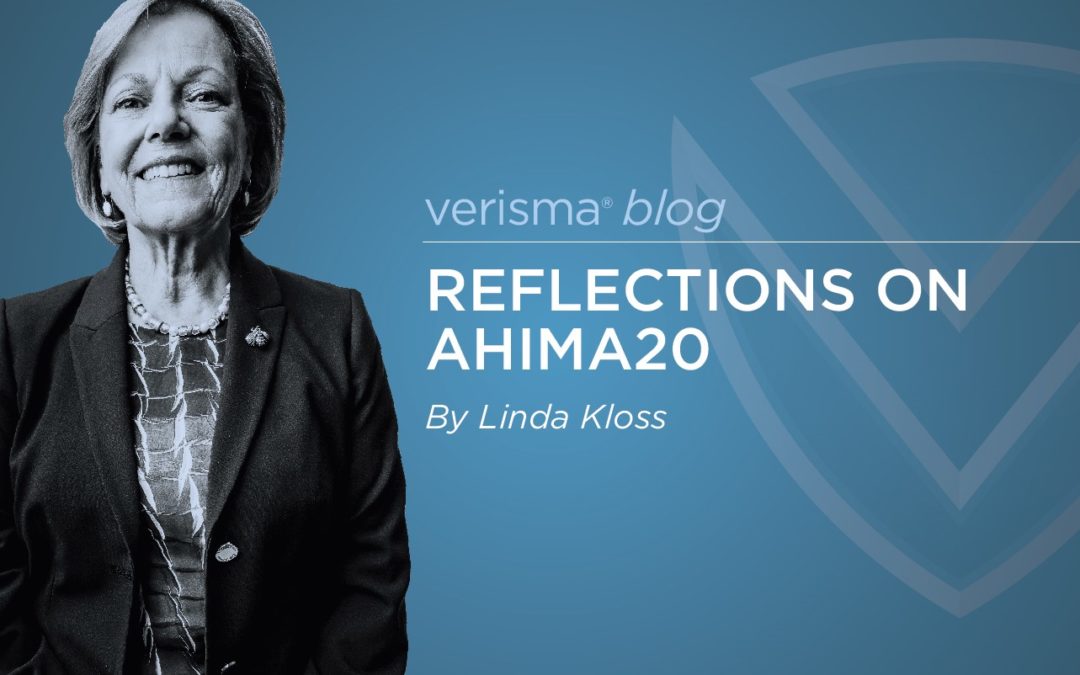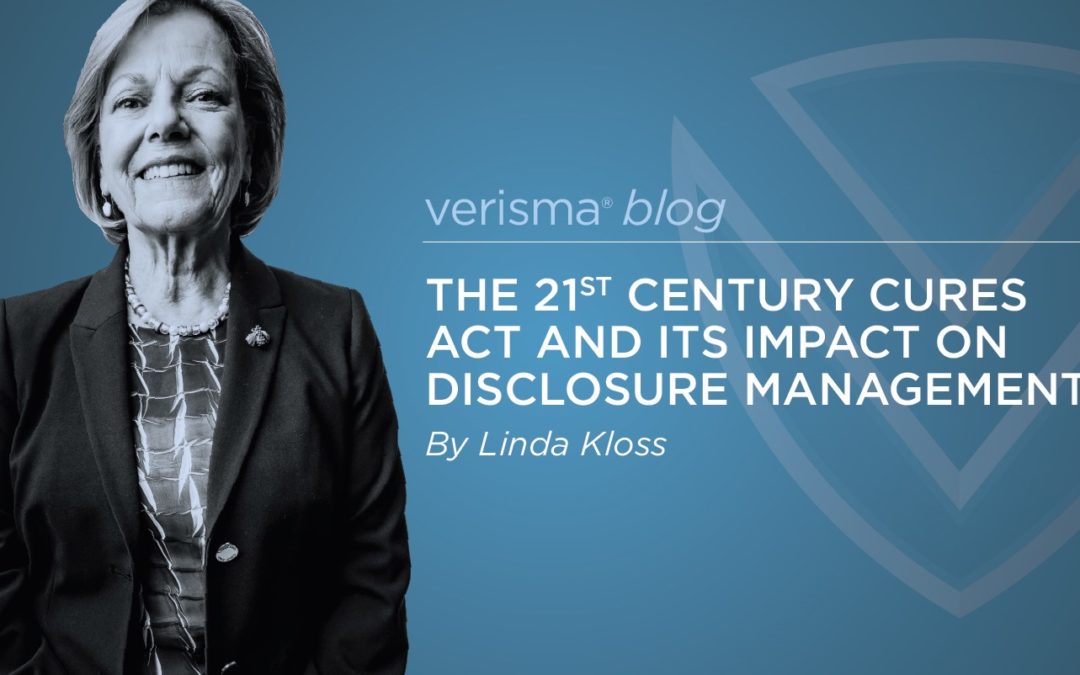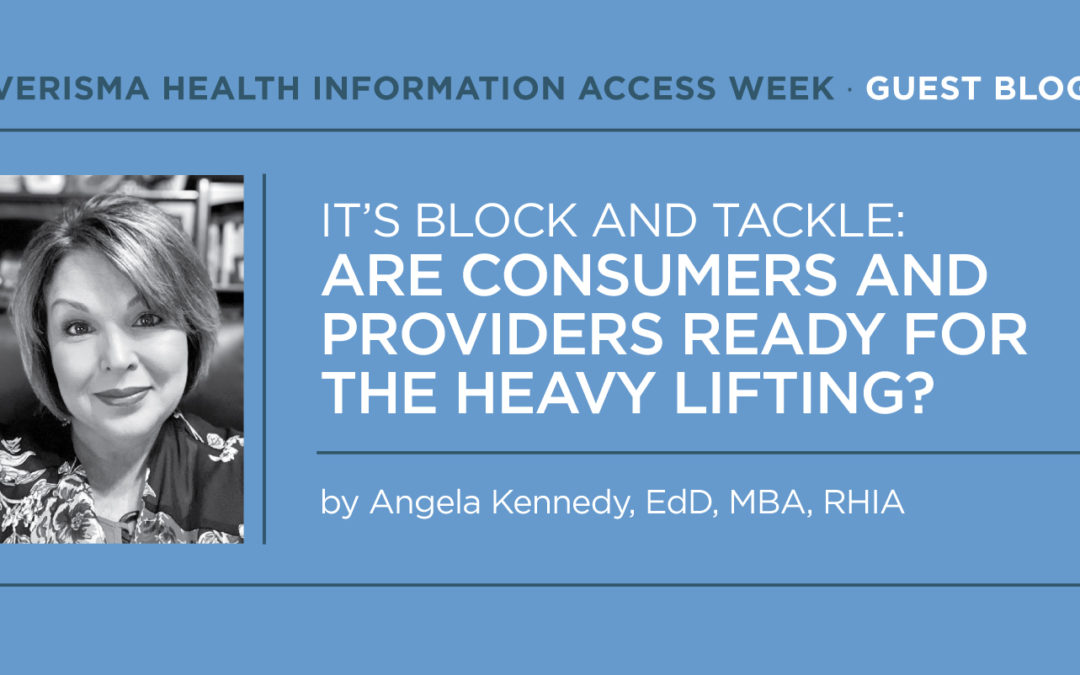
It’s Block and Tackle: Are Consumers and Providers Ready for the Heavy Lifting?
It seems not too long ago I was living a completely normal “mom life.” Normal routines, happy family, and happy life. Eight years ago, seems like yesterday. Our world changed with one routine doctor’s visit and with one diagnostic test. I can remember that day very clearly. I can remember every detail. My 11-year-old adopted daughter was diagnosed of Cystic Fibrosis. How could this diagnosis be found so many years after birth? Believe it or not, it is not that uncommon. Since that day, we live a very different kind of normal. Our lives and routines have changed dramatically. My now 19-year-old daughter is acutely aware of her diagnosis and plays a very active role in her care and the maintenance and review of her electronic health information. She often tells everyone “Personal health information is saving Grace.” She generates and shares quite a bit of data collected by medical equipment, wearables, and other devices. My daughter’s chronic diagnosis requires her to be seen by multiple providers in-state and often across state lines. She is intimately involved in the collection, review, and sharing of her personal and electronic health information.
Our quest for interoperability is ongoing and while many believe interoperability exists, that is not always true or at least not true in every circumstance. It is often a challenge to receive access to every element of electronic health information required for care. APIs exist but are often underutilized placing the burden on the consumer. We have access to electronic health information, but it is often not comprehensive or interoperable. Electronic health information should not be leveraged to hold consumers hostage to a particular provider, service, or location. Recommended lean data sharing solutions are not appropriate for every consumer. In addition, provider utilization of legacy systems can interfere or prevent exchange of electronic health information. These systems may have checked the boxes for meaningful use but lack the capability to provide meaningful exchange of information. The challenges faced by providers and consumers are perplexing. Many times, we continue to rely on paper records to be transferred from provider to provider. Believe it or not, we still maintain scanned and indexed copies of health records to support care and in many cases the provider will request that we share. Technology is invisibly integrated into our daily lives. I am amazed that in 2021 I can electronically unlock the doors of my home and car, track items in my refrigerator, bank, shop, and be seen by a physician digitally but still struggle with electronic access to complete health information.
Information Blocking Final Rule removed intentional obstacles to patient access to electronic health information. The long-awaited rule handed patients greater control over information sharing and use of electronic health data. But will it really live up to consumer expectations? In conversations with providers, I have often been told that “our vendor will accommodate our data sharing needs.” What does that mean? Will your vendor meet the consumer’s need for electronic health information? Will meeting the providers need, improve the quality of care for patients? I believe it can, but the journey will not be an easy lift. The burden cannot be placed solely on the vendor. It is a heavy lift that will require an ongoing commitment to an interoperable system that supports health information exchange and embraces education. Providers and consumers alike will play an important role in leading change.
For the 21st Century Cures Act to reach its potential as a catalyst for better healthcare and outcomes, advocating for and adoption of a systemic free-flow of electronic health information with a consumer-centric focus will be required. It should be a partnership between provider and consumer. Health Information Management (HIM) professionals can play a key role in accessing organization readiness and ongoing compliance. The HIM professional’s vast knowledge of HIPAA, electronic data access and exchange, as well as privacy and security standards position HIM professionals to be leaders in developing organization policies and educational programs that will benefit providers and consumers. Deliberate attention must be given to the eight exceptions outlined in the Cures Act related to information blocking. Aiding providers and consumers in understanding these exceptions are essential in achieving a successful partnership. Knowledge is key to access innovation and in mitigating future challenges.
Angela Kennedy, EdD, MBA, RHIA is CEO, Commission on Accreditation for Health Informatics and Information Management Education and former Professor and Chair, Health Informatics and Information Management Program, Louisiana Tech University. She is a Past President of AHIMA and in recent years has become a Consumer Advocate.

